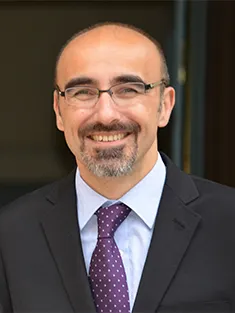Winner: 2021 Tilden Prize
Jonathan Steed
Durham University
For work in the understanding, control and application of the assembly of molecular materials in the crystal and gel state.

Professor Steed is fascinated by the way in which chemical molecules assemble – like Lego blocks – to give complex, functional structures. Gel (and jelly), for example, consists of entangled strands of molecules that are so tied up with one another they behave as a solid even though the gel is mostly water. Professor Steed and his team use specially designed gels as little laboratories to discover new crystalline forms of pharmaceuticals. These new crystals can have different properties that get drugs into the body faster and make them easier to formulate as a pill (essentially, new medicines that might not otherwise make it to market).
Biography
Professor Jonathan Steed obtained his BSc (1990) and PhD (1993) degrees at University College London, while working on organometallic chemistry with Derek Tocher. Between 1993 and 1995 he was a NATO postdoctoral fellow at the University of Alabama and at the University of Missouri with Jerry Atwood. In 1995 he was appointed as a Lecturer at Kings College London and in 2004 he joined Durham University where he is currently Professor of Inorganic Chemistry. He is co-author of the books Supramolecular Chemistry (2000, 2009 & 2021), Core Concepts in Supramolecular Chemistry and Nanochemistry (2007) and around 350 research papers. Since 2020, Professor Steed has been Editor-in-Chief of the ACS journal Crystal Growth & Design and was previously Associate Editor at Chemical Communications and New Journal of Chemistry. He has edited the Encyclopaedia of Supramolecular Chemistry (2004), Organic Nanostructures (2008) and Supramolecular Chemistry from Molecules to Nanomaterials (2012). His awards include the RSC Meldola Medal (1998), Durham’s Vice Chancellor’s Award for Excellence in Postgraduate Teaching (2006), the Bob Hay Lectureship (2008) and the RSC Corday-Morgan Prize (2010). He holds a Royal Society Wolfson Research Merit Award and is a Senior Fellow of the Higher Education Academy. Professor Steed's interests are in solid state and pharmaceutical materials chemistry, supramolecular gels and crystal engineering.
Chemistry underpins so many aspects of our lives: revealing this through my teaching, science communication, and writing is an absolute joy.
Professor Jonathan Steed
Q&A with Professor Jonathan Steed
How did you first become interested in chemistry?
I was always going to be a chemist. It was just inevitable and I never questioned it. Even as a small child, standing on a chair at my grandmother’s sink pouring water from one container to another, my mother remarked that I would become a chemist (although she may have meant pharmacist!) The 'central science' has that key balance of rigour and creativity that I find appealing. My son is a mathematician. I can’t imagine having the strategic insight to conceive of and solve mathematical research problems. I am more of a research tactician. Pick a starting point that looks like it might be interesting, attack it and see what happens. Chemistry rarely disappoints and unlike the complexity of biosciences, simple molecules often lead to interesting results.
What motivates you?
I really love being the guy that gets to show bright motivated young people about how fascinating and nuanced the world we live in is. Chemistry underpins so many aspects of our lives: revealing this through my teaching, science communication, and writing is an absolute joy. It’s like I get just a tiny bit of reflected glory out there for all the scientific discoveries I can teach to our students.
What has been a highlight for you (either personally or in your career)?
My greatest project has been my book Supramolecular Chemistry. Now spanning three editions and three languages it is the place I can put all of the wonderful things I love about chemistry: the science, the context, the people and the history. I have spent many happy days and nights working feverishly to create pictures and stories for the book. As a result, it has grown rather too large at around 1,400 pages but there’s something in there for everyone and I hope to keep delivering the miracles of the field through this book for my whole career.
What is your favourite element?
I will always have a soft spot for ruthenium – the element I did most of my PhD on. In 2009 I did a podcast for the RSC as part of the Chemistry in its Element series and, of course, the element I chose to talk about was ruthenium. It is the element once described by one of the fathers of modern inorganic chemistry, Sir Geoffrey Wilkinson, as “an element for the connoisseur”. Ruthenium is everywhere, stiffening the backbone of technology, and it forms a vast range of interesting compounds that seem to have that perfect balance between reactivity and stability to make them generally useful but easy to handle.